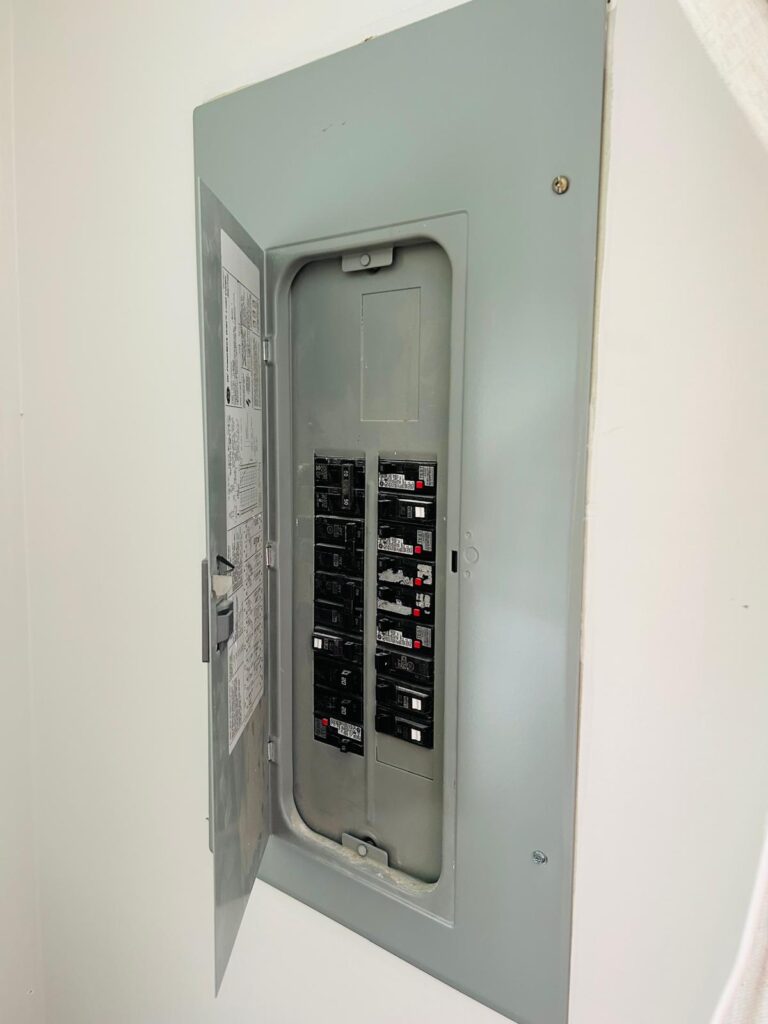Your electrical panel is one of the most important components of your home—even if it’s not something you think about often. It’s the heart of your electrical system, responsible for distributing power to every outlet, light fixture, and appliance. But like any part of your home, it can develop issues over time—and when it does, it can pose serious safety risks.
Here are three key things every homeowner should watch out for with their electrical panel and why staying on top of them matters.
- Frequently Tripped Breakers or Flickering Lights
If your circuit breakers are tripping regularly or your lights flicker for no obvious reason, it could be your panel’s way of waving a red flag. While occasional trips happen—especially if you’re running high-energy appliances like a vacuum or space heater—frequent breaker activity usually signals an underlying problem.
This can mean:
Your panel is overloaded or outdated.
A specific circuit is damaged or worn.
There’s a loose wire or faulty breaker inside the panel.
Ignoring these signs can increase the risk of overheating and even electrical fires. If this sounds familiar, it’s time to have an electrician inspect the panel and the circuits it controls.
- Rust, Corrosion, or Burning Smells
Take a peek inside your panel (safely—don’t touch anything). If you notice any signs of rust, water stains, corrosion, or melted components, that’s a major concern. These signs often point to moisture getting into the panel box, which should never happen.
Even worse is a burnt smell or visible charring, which suggests overheating or arcing. These are high-priority issues that need immediate attention.
What to watch for:
A musty or burnt smell near the panel
Discoloration or corrosion on breakers or wires
Buzzing or popping sounds
If you notice any of these symptoms, call a licensed electrician right away. Electrical panels are not a place to take chances.
- An Old or Outdated Electrical Panel
Not all panels are created equal—especially if your home is more than 30 years old. Older panels weren’t built to handle today’s power needs. If your home was built before the 1990s and still has its original panel, you may be pushing its limits without even realizing it.
Common outdated panels include:
Fuse boxes instead of breakers
Panels made by brands known for safety issues (like Federal Pacific or Zinsco)
Panels with a low amperage (60–100 amps), which might not support modern HVAC systems, kitchens, or home offices
Upgrading your electrical panel doesn’t just improve safety—it can also support future home upgrades, including EV chargers, new appliances, and solar systems.
Final Thoughts
Your electrical panel may not be the most exciting feature in your home, but keeping an eye on it can help prevent costly damage—and even protect your home and family from fire risk. Pay attention to warning signs like frequent breaker trips, signs of damage or moisture, and outdated systems. If anything seems off, don’t wait. Call in a professional to take a look.
When it comes to electricity, it’s always better to be proactive than reactive. A little vigilance now can save you a major headache (or worse) down the line.

